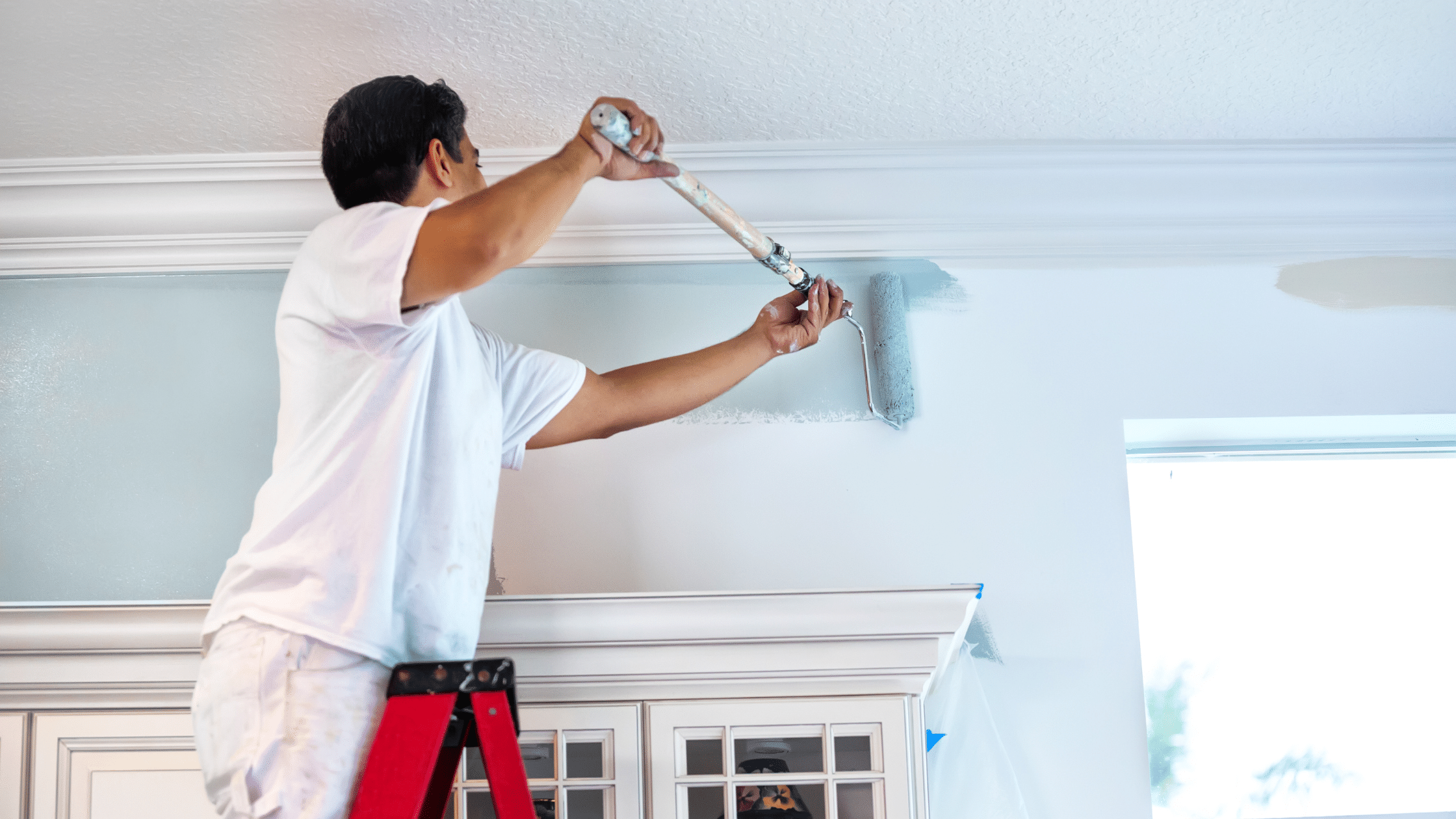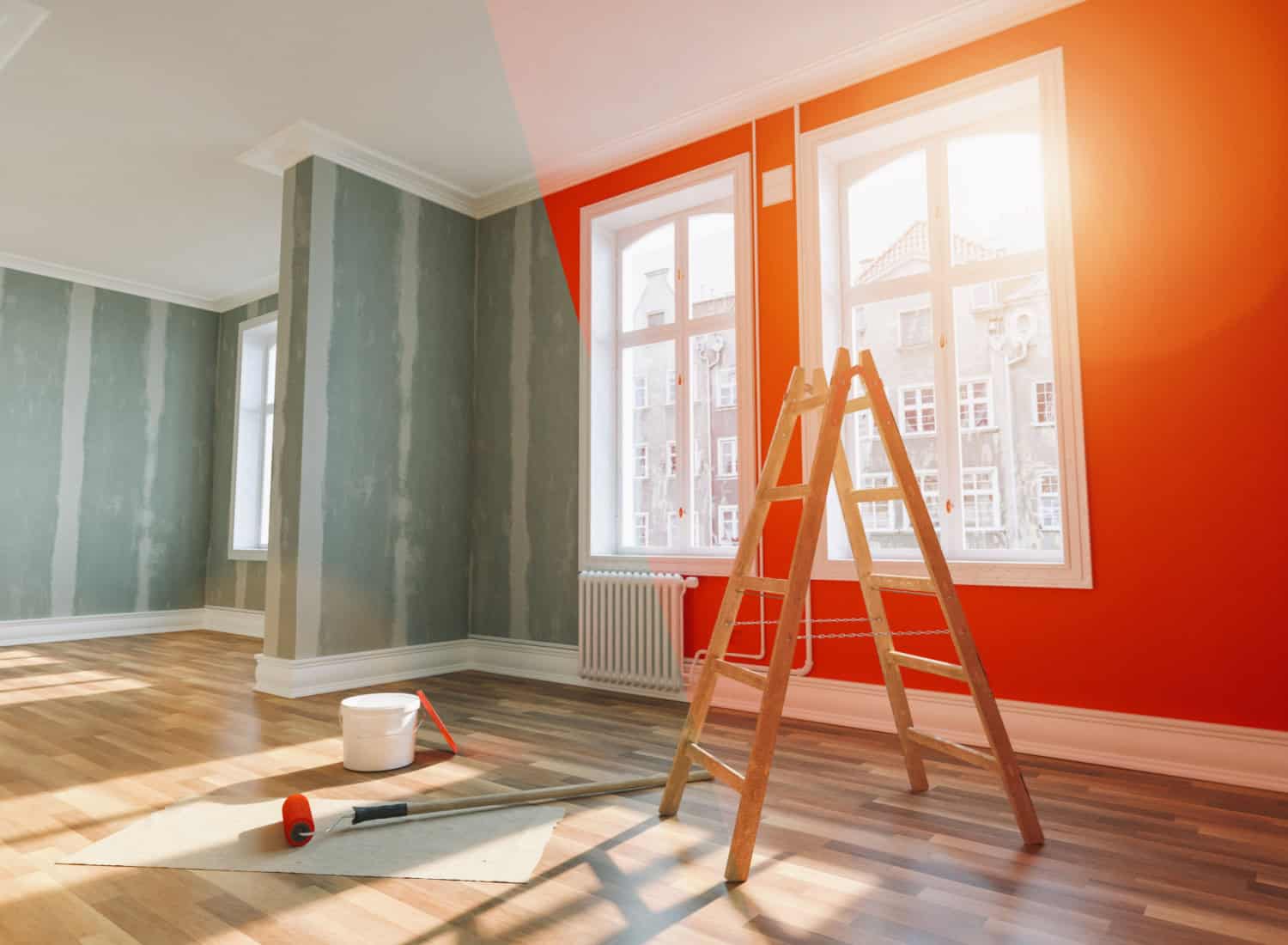Expert Lakewood Interior Painting for Residential and Commercial Properties
Enhance Your Interior Layout With Comprehensive Shade Examination
The combination of shade examination right into interior style presents a distinct opportunity to fine-tune and raise the aesthetic and emotional resonance of an area. By engaging with an experienced shade professional, you can navigate the complexities of color option, ensuring that your choices not just enhance architectural functions yet also resonate with individual style and emotional impact.
Advantages of Shade Consultation

Additionally, color assessment aids in taking full advantage of all-natural light and enhancing spatial perception. Lighter shades can make a room show up more extensive, while darker tones develop an intimate setting. Cleveland Metro Painting Specialists. This calculated application of color can considerably affect the general ambiance of any type of indoor room
Additionally, professional experts have a detailed understanding of ageless standards and current fads, ensuring that the picked shades will remain appealing over time. This insight can save customers from expensive redesigns in the future. Finally, color examination empowers clients by offering them with a clear vision and instructions, cultivating self-confidence in their design selections and inevitably leading to a much more satisfying and effective interior style result.
Understanding Shade Psychology
The value of color psychology in interior decoration can not be overstated, as it looks into the psychological and emotional effects that different colors can stimulate in people. Shades can influence mood, habits, and even performance, making them a critical consideration in any design task.
For circumstances, warm colors such as red, orange, and yellow are usually related to energy and warmth. They can boost feelings of enjoyment and comfort, making them suitable for social areas like living kitchen areas or spaces. Alternatively, trendy colors like blue, green, and purple tend to stimulate peace and harmony, making them ideal for bedrooms or meditation areas.
Furthermore, using neutral tones can develop a well balanced setting by enabling the bolder shades to attract attention without overwhelming the detects. Comprehending these psychological effects enables designers to create spaces that not just look visually pleasing but additionally promote psychological wellness.
Integrating color psychology right into interior decoration includes a thoughtful choice of shades customized to the intended feature of each space, ultimately improving the general experience for its occupants. This recognition is critical for achieving a harmonious and functional indoor environment.
The Color Wheel Clarified
Comprehending the partnerships between tones is necessary for reliable interior decoration, and the color wheel works as a valuable tool in this process. The color wheel, established by Isaac Newton in the 17th century, highlights the range of shades set up in a circular style. It comprises primaries-- red, blue, and yellow-- that can not be created by mixing various other shades. Second shades, developed by combining primaries, include environment-friendly, orange, and purple. Tertiary colors result from mixing a main and an additional color, leading to shades such as red-orange and blue-green.
The color wheel assists designers realize the relationships between colors, consisting of corresponding, similar, and triadic schemes. Corresponding shades, located contrary each other on the wheel, develop lively contrasts that can stimulate an area.
Using the shade wheel in indoor design not only improves visual charm yet likewise evokes specific emotions and ambiences, making it an important reference for shade consultation. Understanding these partnerships inevitably equips designers to create spaces that are both aesthetically captivating and functional.
Picking the Right Scheme
Commonly, selecting the right combination is a decisive variable in achieving a successful indoor design task. A well-chosen color plan can merge a room, enhance its functions, and evoke desired emotions. To begin, take into consideration the purpose of the space. Various spaces offer diverse functions and need schemes that show their intended usage; for instance, relaxing shades such as soft blues or greens function well in bed rooms, advertising leisure.
Light can considerably alter just how shades show up, so it is vital to analyze the area at various times of the day. A harmonious scheme needs to enhance these functions, producing a cohesive look throughout the room.
When choosing colors, make use of the 60-30-10 policy, which recommends that 60% of the room must be a dominant color, 30% a second color, and 10% an accent shade. This ratio makes sure balance and visual rate of interest (Cleveland Metro Painting Specialists). Ultimately, example shades on the walls prior to committing, as this allows you to see how the shades interact with one another and the overall ambiance they develop in your interior decoration job.
Collaborating With a Color Expert

When dealing with a color consultant, the process typically begins with an initial appointment. During this conference, you'll review your vision, preferences, and the existing aspects in your room. The professional will certainly evaluate your requirements and might recommend specific shade schemes that straighten with your objectives.
After developing an instructions, the expert will certainly provide samples and aesthetic more info here help to aid you envision the suggested color pattern. This action is essential, as colors can appear differently under differing illumination problems.
Additionally, a shade expert can lead you in picking corresponding furnishings, art work, and accessories to integrate weblink with your picked palette. By collaborating closely, you can achieve a refined aesthetic that elevates your interiors and develops an inviting atmosphere. Ultimately, the experience of a shade expert can considerably improve the overall influence of your style project.
Conclusion
In recap, thorough color consultation works as a crucial tool for enhancing interior layout. By leveraging professional expertise of color psychology and spatial dynamics, a tailored color scheme can be developed to evoke certain feelings and develop a harmonious setting. This tactical strategy not just fosters a natural layout narrative yet also alleviates the threat of costly redesigns. Inevitably, engaging with a color expert makes certain an informed and aesthetically pleasing end result, boosting the total check my source experience of the space.
By engaging with a skilled shade specialist, you can navigate the complexities of color selection, guaranteeing that your choices not only complement architectural functions but additionally reverberate with personal design and emotional impact. It consists of main colors-- red, blue, and yellow-- that can not be produced by mixing other colors.The color wheel helps developers realize the relationships in between shades, consisting of corresponding, comparable, and triadic systems.When selecting shades, make use of the 60-30-10 guideline, which recommends that 60% of the space need to be a dominant color, 30% a secondary shade, and 10% an accent shade. By leveraging expert knowledge of color psychology and spatial characteristics, a tailored shade combination can be developed to evoke specific feelings and produce an unified atmosphere.